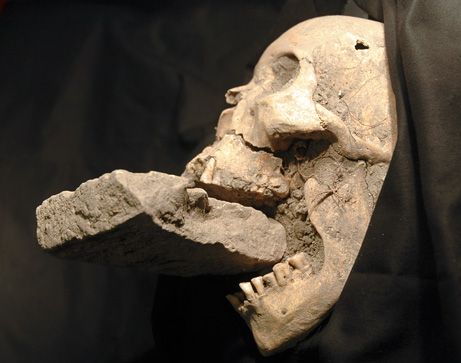Maschalismos is the practice of physically rendering the dead incapable of rising or haunting the living in undead form. It comes from the Ancient Greek word and was also the term for procedural rules on such matters in later Greek customary law.

Such acts considered maschalismos were not limited to folkloric physical risings but also meant to escape the ill will of those wrongfully slain by a murderer after death.
One common method was the cutting off of the feet, hands, ears, nose, et cetera, tying them under the armpits of the corpse all strung together. The piercing of the infant Oedipus’ feet at the time he was abandoned may be considered a kind of maschalismos on the still-living.
In Aeschylus’ tragedy Choephori and Sophocles’ tragedy Electra, Clytemnestra performs maschalismos on the body of Agamemnon after his murder, to prevent his taking vengeance on her.
The term maschalismos has widened to include the customs throughout the different cultures of the world in ritually mutilating their dead to prevent their wrath from affecting the living.
In Hungary and Servia, to destroy the demon it was considered necessary to exhume the body, insert in the heart and other parts of the defunct, or pierce it through with a sharp instrument, as in the case of suicides, upon which it utters a dreadful cry, as if alive; it is then decapitated and the body burned.
In New England the body is exhumed, the heart burned, and the ashes scattered. The discovery of the vampire’s resting-place was itself an art.
The method of discovering a vampire’s grave in Serbia was to place a virgin boy upon a coal-black stallion which had never served a mare and to mark the spot that the horse refused to pass. An officer quartered in Wallachia wrote to Calmet, giving him an instance of this method.
